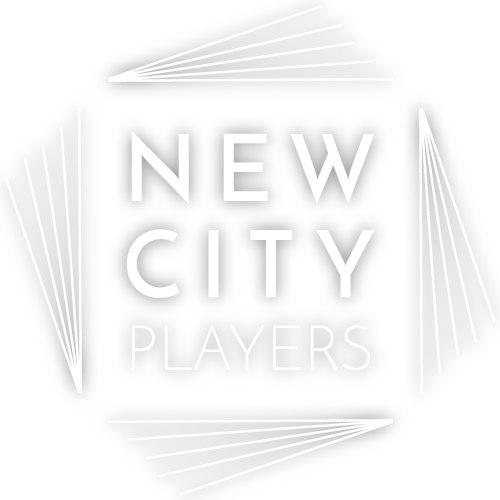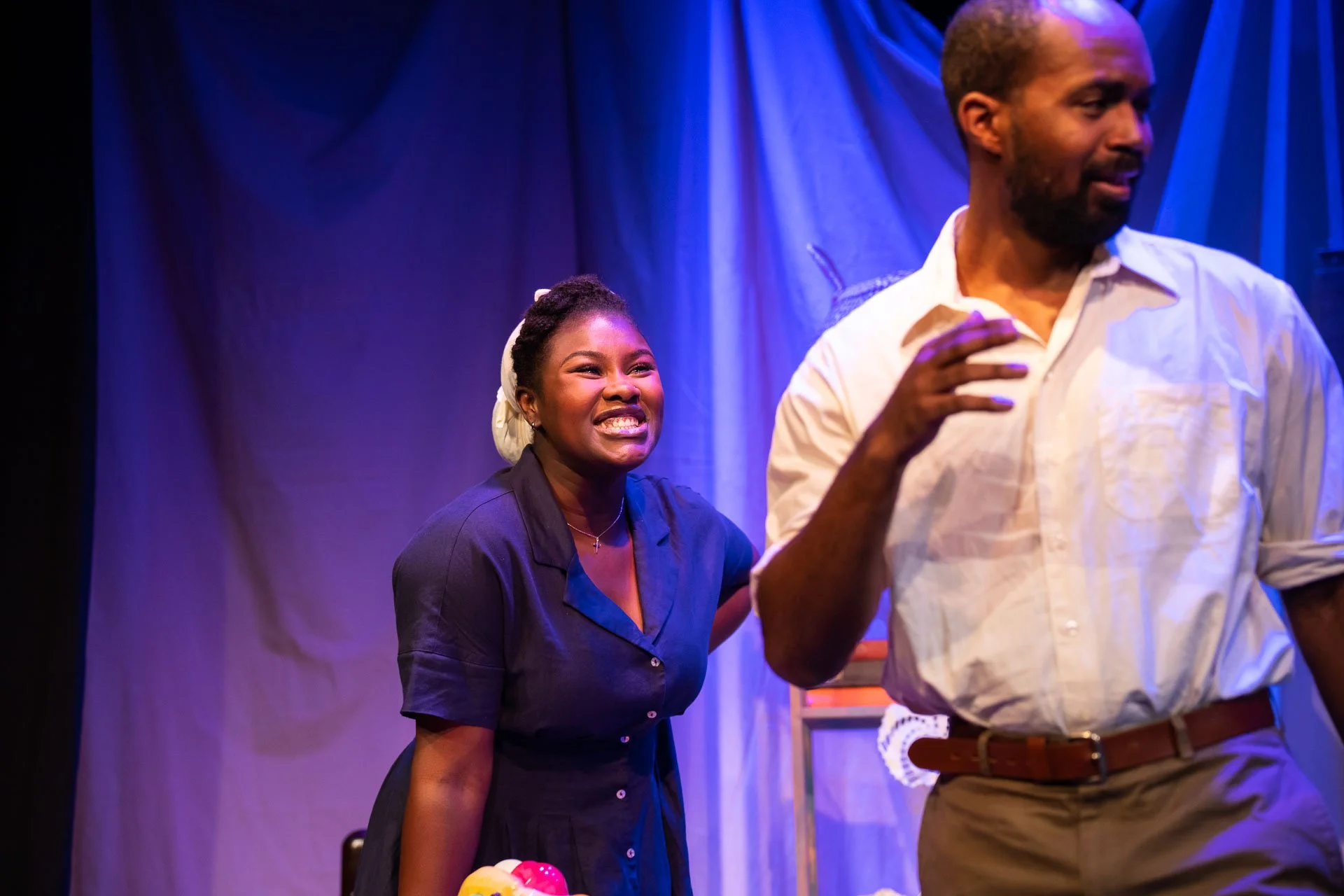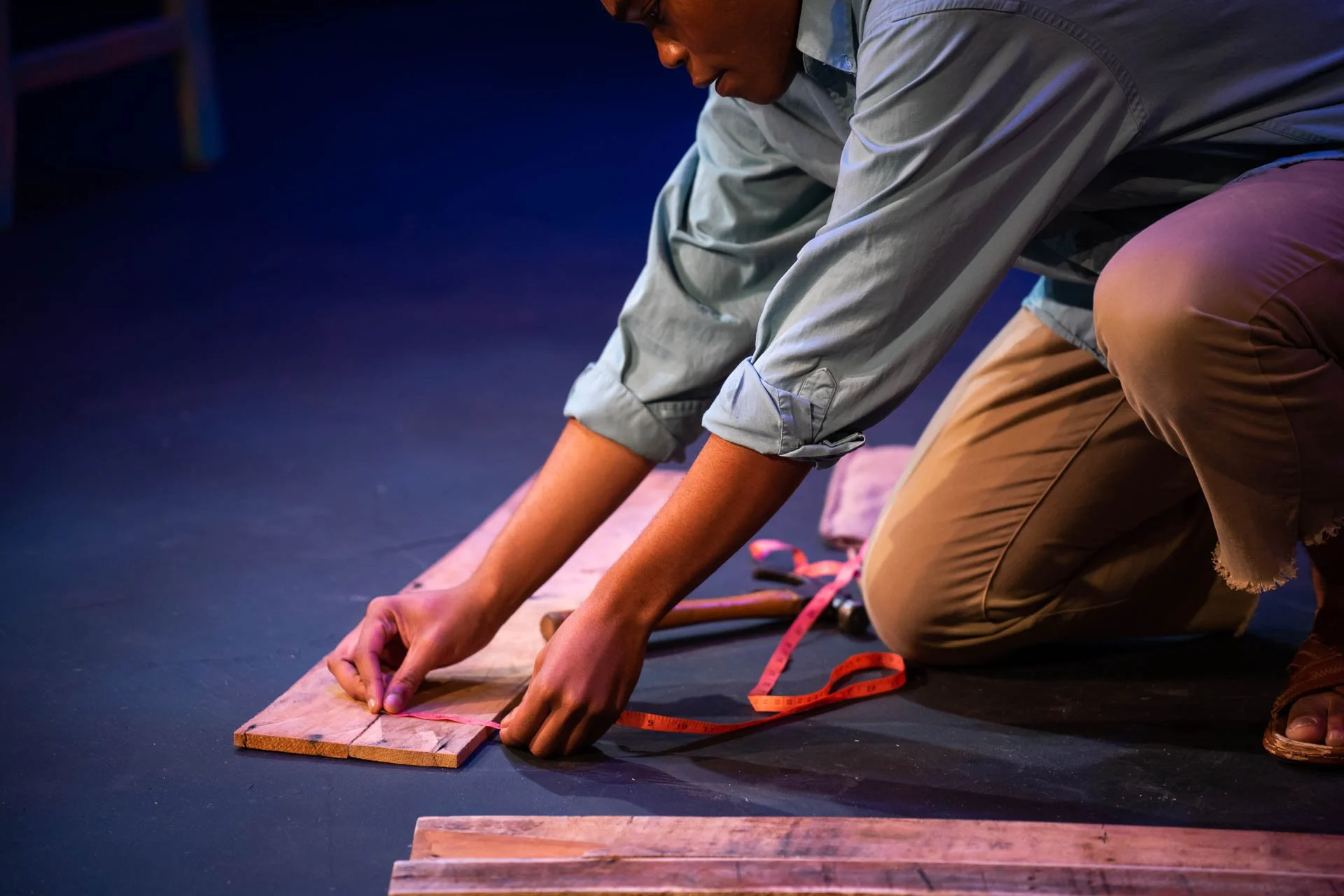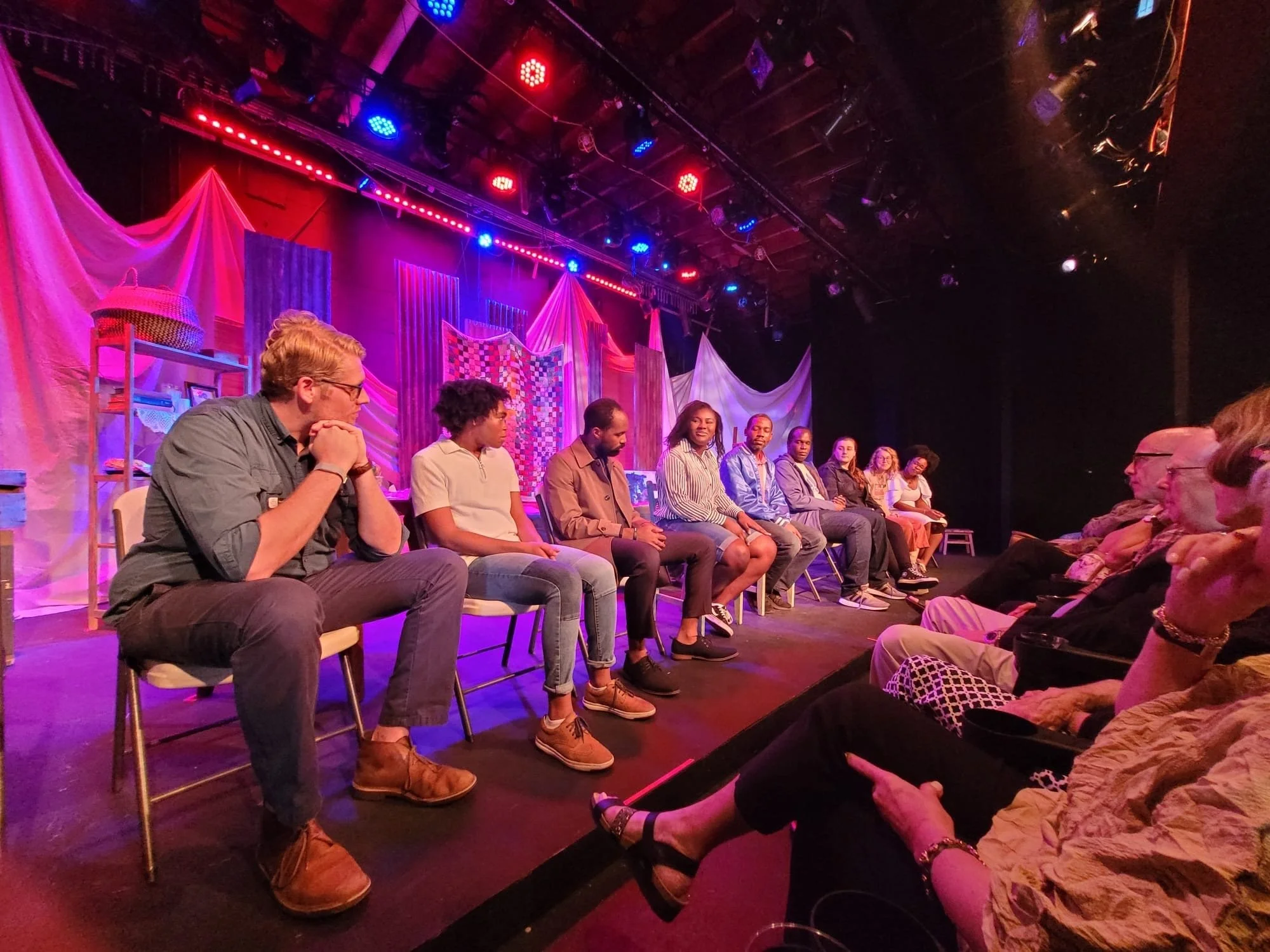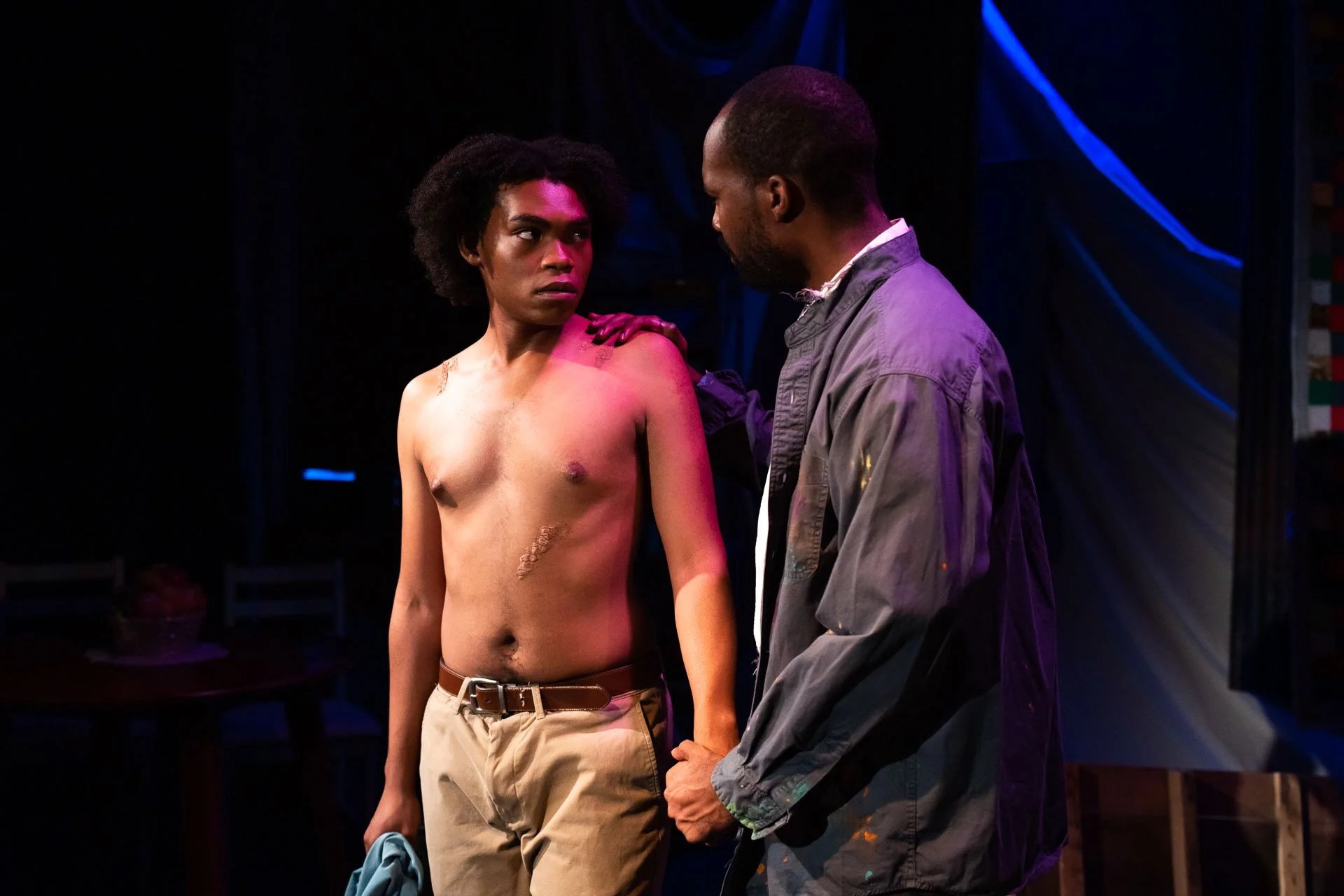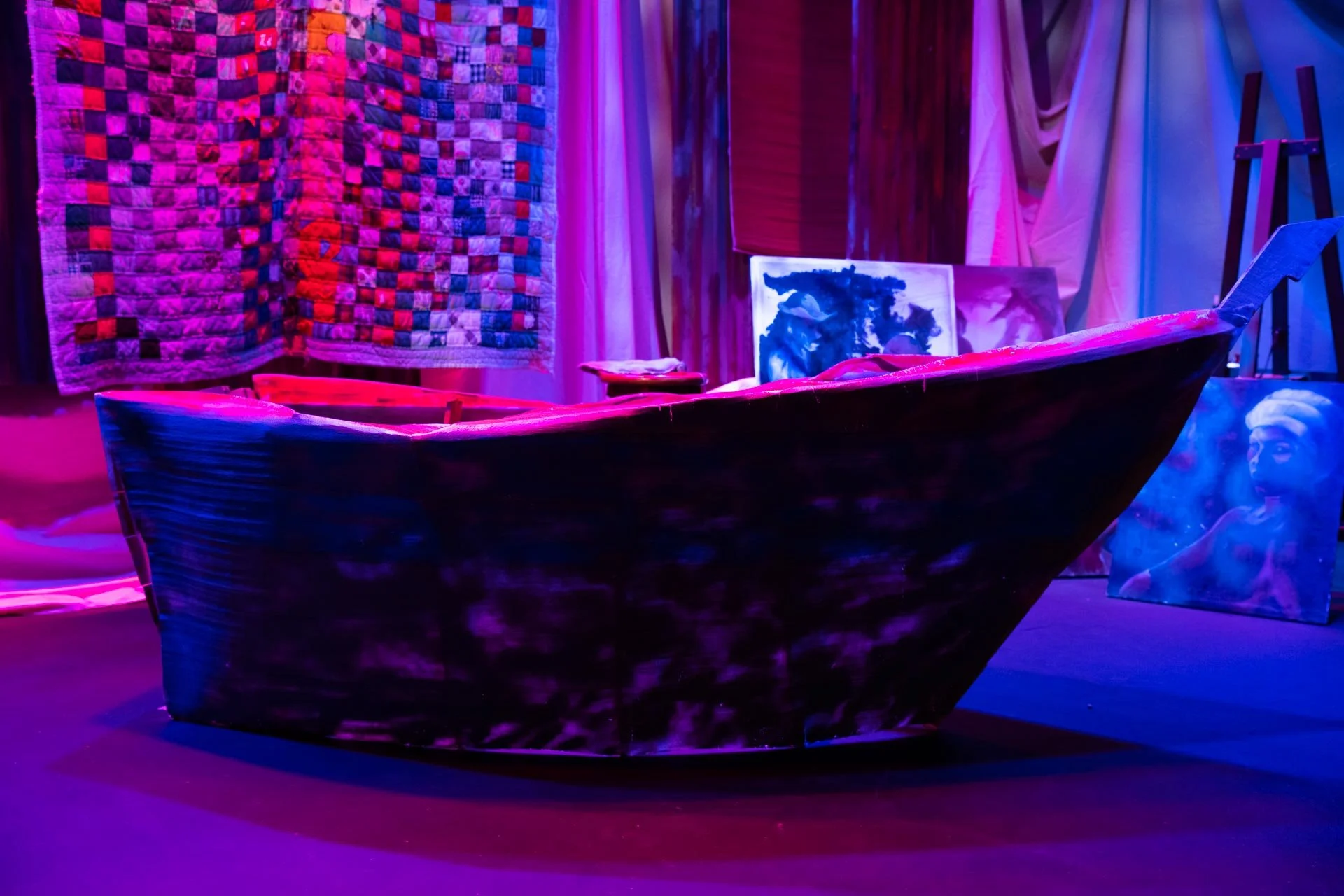The Seas We Cross, The Boats We Build by Ilana Jael
Odlenika Joseph as Judith (left) and Denzel McCausland Edwin (right) in New City Players’ production of Cry Old Kingdom
Though Cry Old Kingdom may now be closed after an incredible three-week run, that definitely doesn’t mean that the conversation around Haitian culture that we at New City Players sought to start with the show has to come to a stop. In fact, we’re all pretty hopeful that it’s only just getting started!
While there are so many aspects of this rich story and of Haiti’s beautiful culture that I wish I’d had the time to delve into more deeply throughout this production process, one particularly interesting fact about our community that I discovered is that the population of Haitian-Americans that lives in Broward’s neighboring county of Miami-Dade is one of the largest that exists in the United States.
As you’ll know if you saw it, one of the reasons for this is directly explored in the play, through the defining dream of Henri Marx, which serves to propel the rest of the story. And it’s a dream of escape—of building a boat strong enough to take himself and a group of like-minded friends away from his troubled homeland and to a kind of promised land of Miami.
“There, I’ll be able to get a job and buy a home. Come in and out of my home whenever I wish. In Miami, people walk around at all times of the night,” he describes.
Still, for those of us who live in or near Miami, it might be hard for us to imagine that anyone would see our crowded, traffic-stricken city as something worth risking not only the wrath of the regime but the wrath of the ocean itself for.
The character Henri Marx building a boat bound for America in New City Players’ production of Cry Old Kingdom
However, a considerably large cohort of Haitians indeed decided just that. This is true both of the period portrayed in the play and of the decades that followed, in which Duvalier’s son Jean Claude inherited the “dictator for life” title and was arguably an even more destructive leader than his harsh father.
Following that, amidst continual political turmoil, matters were only compounded by a 2010 earthquake that devastated much of the country’s existing infrastructure. Ultimately, these circumstances contributed to a total number of people of Haitian ancestry living abroad that now numbers around 3 and a half million, a figure that includes an estimated two million who are thought to have immigrated to the US alone.
Of these, at least 100,000 and maybe as many as 200,000 are thought to reside in Miami, with a large population having congregated in a North Miami neighborhood that has now become known as “Little Haiti” for exactly that reason. Since doing so, many have celebrated significant achievements and made significant contributions to the overall culture, becoming elected officials, accomplished professionals, and, of course, incredibly innovative artists.
But, as is described in depth in resources like this as well as in the podcast Detention by Design, which I and a few other members of the production team consulted during the lead up to the show, the USA did not take an entirely ideal attitude towards those Haitian immigrants who risked their lives to reach our shores.
More even than that, it becomes abundantly clear upon comparison that those Cuban immigrants who arrived here during around the same period— fleeing their own tyrannical dictator in Fidel Castro—were treated substantially better than those who came here from Haiti.
Of course, a good deal of the reason for the disparity may have been political, with the communist Castro perhaps seeming to be a greater danger to American equilibrium than the capitalist Duvalier—whom our government even at points gave aid to. But others have suggested that at least part of this difference in treatment may have been fueled by racism that appraised dark-skinned Haitians as a greater threat to the cultural order than lighter skinned Cubans.
Meanwhile, whether our community members are consciously biased or not, I also agree with an assessment expressed at our last talkback that racism may have been at least part of the reason NCP found it so difficult to get audiences interested in this particular production. In other words, I could easily imagine even someone who didn’t have anything “against” people of color finding themselves reluctant to go out of their way to attend a play that was solely focused on them, especially one that also centered almost entirely upon a culture they might consider alien.
Cast and audience talkback after one of the runs of Cry Old Kingdom
In a sense, that’s only human nature—since it’s not as if I haven’t been particularly eager at times to see plays that focused on certain aspects of my identity as opposed to those that did not. And the plays I always end up learning the most from are those that take me into the experiences of people I have also most nothing in common with, allowing me a gateway into different worlds.
This, of course, was true of Cry Old Kingdom, though, or reasons both I and director Marlo Rodriguez touched on during some of my earlier posts, it’s also true that there are ways in which the world portrayed seemed one that was too close to our own for comfort.
For instance, while many Americans may not be able to imagine conditions in our own country becoming so dire that flight overseas may seem the only reasonable solution, in a phenomenon dubbed “Blaxit,” a sizable cohort of Black Americans have decided just that. Especially in response to the killing of George Floyd, many have decided that living their lives abroad was a better bet than staying here where, as the above article puts it, “merely jogging and driving while Black can prove fatal.”
TJ Pursley as Henri Marx (left) and Denzel McCausland Edwin (right) in New City Players’ production of Cry Old Kingdom
One may even perceive a dark irony in the fact that Henri’s access to all the freedoms he imagines he might find in America—to get a good job, own his own home, or even walk down the street at night without fear of experiencing violence inflicted by an agent of the state—might well be limited by his skin color if he were a Miami citizen today.
Meanwhile, to circle back to the issue of censorship, another of the play’s key themes, the bans on drag that have now been proposed by legislators in 32 states—including, most chillingly, our own—may have effects more far-reaching than many might initially imagine.
As this article notes, the vagueness of the language used in some of these proposed bans is such that it could theoretically criminalize something as innocent as “two trans people going out and singing karaoke.” And the proposed Florida ban, which seems to be moving ever-closer to being signed into law, has already prompted speculation from local theatremakers that it might impede on freedoms that they’ve traditionally enjoyed when presenting artistic performances.
So where, exactly, am I going with all this? For one thing, I suppose I’m trying to make the point that Cry Old Kingdom’s continual resonance is one of countless examples attesting to the value of learning and embracing stories that come to us from diverse cultural contexts. And, luckily, whether you’re able to join NCP on the rest of our adventure or not, there are plenty of opportunities in our area for anyone still interested in celebrating Haitian culture or enjoying the insight of artists of Haitian descent.
The boat built by character Henri Marx in New City Players’ production of Cry Old Kingdom
But, before I finish up this blog post with a round-up of a few more chances to experience Haitian art in our area over the next month or so, I’d like to reflect for one more moment on the somewhat broader absurdity of the fact that a nation founded on the idea of “liberty and justice for all” could level such an intense stigma against those who came here seeking exactly that.
Though Haitian immigrants were once pejoratively described as “boat people” for the way in which many made their way into our midst, in a way, few Americans are not boat people—in that few among us did not have ancestors who first arrived here by way of distant shores. And our nation, too was one that had its start in revolution—a revolution enacted in the hopes of fairer, brighter future.
And though, in many ways, that dream is still incredibly far from being realized, that doesn’t mean that crossing another ocean is the only option we’ve got. Instead, we can keep learning, and keep fighting—until we find out if there’s something better we can build.
More ways to celebrate Haitian Culture this month and beyond!
"Nostalgia Primitive D'Haiti" | Haitian Heritage Museum
The Haitian Heritage Museum presents the opening exhibition "Nostalgia Primitive D'Haiti", during Haitian Heritage Month. The exhibition will demonstrate the sentimental era of Haiti, through oil on canvas. The themes depict country, everyday life, market women and landscapes. The artists featured in the group show are Sully Obin, Camille St. Andrews, Rodrigue Richard and many others. Live Performance by Lesly Charles and Live Entertainment by Marcano Sax.
On view until November 18, 2023
Create Dangerously | Miami New Drama
Experience a riveting journey of courage, art, and resilience with the world premiere of “Create Dangerously,” a theatrical adaptation of Edwidge Danticat’s critically acclaimed book. Directed by the visionary Lileana Blain-Cruz, this captivating play will ignite your imagination and stir your soul as it explores the power of creativity in the face of adversity. Witness a transformative story that transcends borders and boundaries, celebrating the indomitable spirit of the human heart.
Now open, playing until May 28th
Everything, Earth and Sky | Patricia & Phillip Frost Art Museum
The Frost Art Museum is home to one of the largest collections of Haitian paintings from the 1980’s and 1990’s in the United States. This exhibition and accompanying catalog are a part of the museum’s ongoing efforts to make its collection accessible through research and digitization. A group of dynamic scholars in the area of Haitian art, helped develop the exhibition’s focus around the artists’ varied use of space. The exhibition also includes contemporary Haitian American artists, Vanessa Charlot, Mark Delmont, Edouard Duval-Carrié, Mark Fleuridor, Madjeen Isaac, Abigail Lucien, and Asser Saint-Val as well as paintings from the collection by Gerard Fortuné, Alexandre Gregoire, Maxan Jean-Louis, Eddy Myrthil, and Fritzner Obner, among others.
On view until Sunday May 28th
Haitian Heritage Celebration | City Of Miramar
Join us at the City of Miramar’s annual Haitian Heritage Celebration! Enjoy food, drinks and dancing in celebration of Haiti’s independence and culture. Art Exhibit, Cultural Presentations, Live Music & Entertainment from popular artist Kenny Haiti, Fatima and Jaydo with Emcee Mecca.
Saturday, May 13th | 6-10pm
ANN APRESYE ZEV ATIS AYISYEN: Let's Appreciate The Works of Haitian Artists
Haitian Art has remained faithful to its cultural and social roots outside its territorial limits through artists emotionally and intellectually committed to its identity. These artists, cultural makers, have explored and synthesized national symbols, daily activities, social denunciations and religious traditions with exquisite billing, validating a Haitian art of universal scope. Others have recovered from popular art its rich artisan tradition and have promoted an artistic product of high aesthetic value. All, united in showing from the diaspora a solid, own and living art of their culture. Celebrating the exploration and synthesis of national symbols, daily activities, social denunciations and religious traditions, this exhibition demonstrates the universal scope of Haitian art. In celebration of Haitian Heritage month, Pompano Beach Arts and the Latin American Arts Pavilion (LAAP) will host an exhibition entitled Feeling the Haitian Art (SANTI ATIZAY AYISYEN AN).
On view until July 18th; Artist talk to be held on May 26th
